July 5, 2025

The article titled "10 Schedules of Reinforcement Examples for Effective ABA Therapy" presents a comprehensive exploration of various reinforcement schedules utilized in Applied Behavior Analysis (ABA) therapy, aimed at enhancing learning outcomes. It delineates different reinforcement strategies, including:
These strategies are emphasized for their effectiveness in fostering desired behaviors and facilitating skill acquisition through structured and tailored approaches. Such insights are crucial for professionals seeking to optimize their ABA practices.
In the dynamic field of Applied Behavior Analysis (ABA), the effectiveness of therapy often hinges on the strategic application of reinforcement schedules. With the rising demand for skilled Board Certified Behavior Analysts (BCBAs), understanding the nuances of various reinforcement strategies is crucial. These methods not only shape behavior but also enhance learning outcomes, making them indispensable tools for practitioners.
How can these schedules be tailored to meet individual needs and maximize engagement in therapy? Exploring ten compelling examples of reinforcement schedules reveals the potential to transform therapeutic practices and foster lasting behavioral change.
The demand for (BCBAs) is projected to increase by an impressive 25% by 2026. In this rapidly evolving landscape, Hire ABA serves as tailored specifically for BCBAs, streamlining the hiring process to connect qualified professionals with roles that align with their expertise and career aspirations.
Our empower candidates to submit their resumes for evaluation, where our dedicated team meticulously assesses their experience and career goals. By utilizing advanced job fit scoring, we identify opportunities that align with their skills, preferences, and desired locations.
The platform not only connects job seekers with top-tier opportunities but also provides essential resources such as resume-building tools and interview preparation guides, significantly . This comprehensive support is crucial in improving job placement for BCBAs, establishing Hire ABA as an invaluable tool in the field of (ABA) therapy.
Are you facing challenges in navigating your career path? By leveraging Hire ABA, that resonate with their expertise and aspirations. Don’t miss out on the chance to take control of your career—join us today and discover the difference Hire ABA can make in your professional journey.
A fixed ratio plan is one of the that delivers rewards based on a predetermined number of responses, such as praising a child after completing five tasks. This method cultivates consistent performance, as individuals understand that their efforts directly yield .
Research reveals that schedules of reinforcement examples, such as , are especially effective during phases, where clear expectations and immediate feedback can significantly enhance learning outcomes. Notably, when implemented effectively, fixed ratio systems have achieved success rates of up to 90% in improving skill acquisition, particularly when caregivers actively participate in the process.
By establishing a , these plans not only motivate learners but also facilitate the acquisition of new skills, rendering them a crucial component of effective .
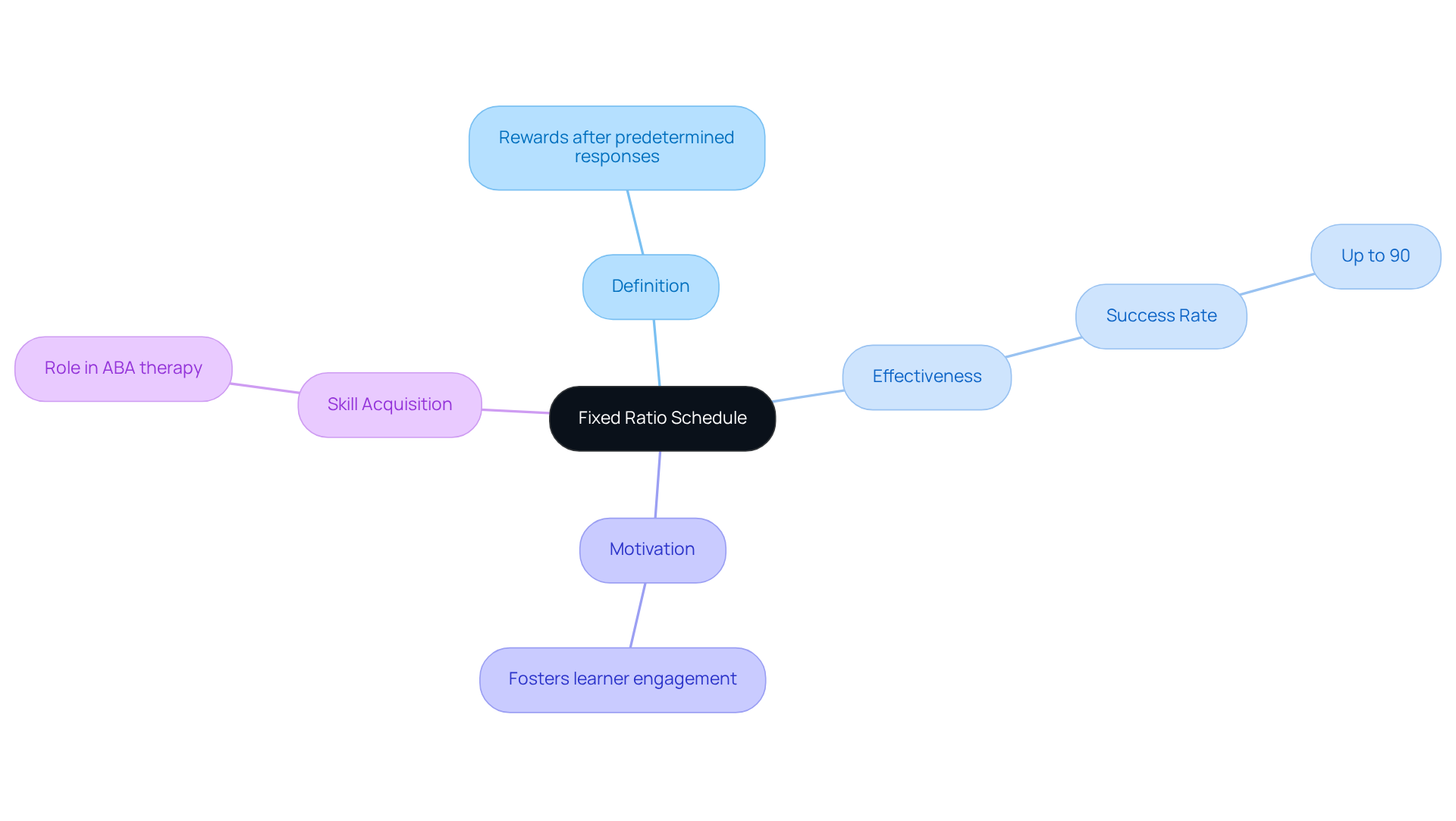
A variable ratio schedule delivers reinforcement after an unpredictable number of responses, making it highly effective for maintaining engagement. For instance, a child might receive a reward after an average of three to five correct responses. This unpredictability keeps individuals motivated, as they cannot predict when the next reward will come, leading to sustained effort and persistence in behavior. Research indicates that , which is essential for .
Consider the real-life applications of , especially in the context of variable ratio systems. In educational environments, students are rewarded for completing an unpredictable number of tasks. In therapy sessions, children are reinforced for at varying rates. Furthermore, loyalty programs and gambling situations demonstrate how variable ratio systems enhance engagement by fostering resilience and persistence in behaviors.
Behavior analysts emphasize that this is crucial; it cultivates a sense of anticipation that drives continued participation. To effectively implement , such as , practitioners should integrate them into their strategies, ensuring that rewards are delivered unpredictably to maximize engagement. Are you ready to explore how these principles can transform your approach to reinforcement?
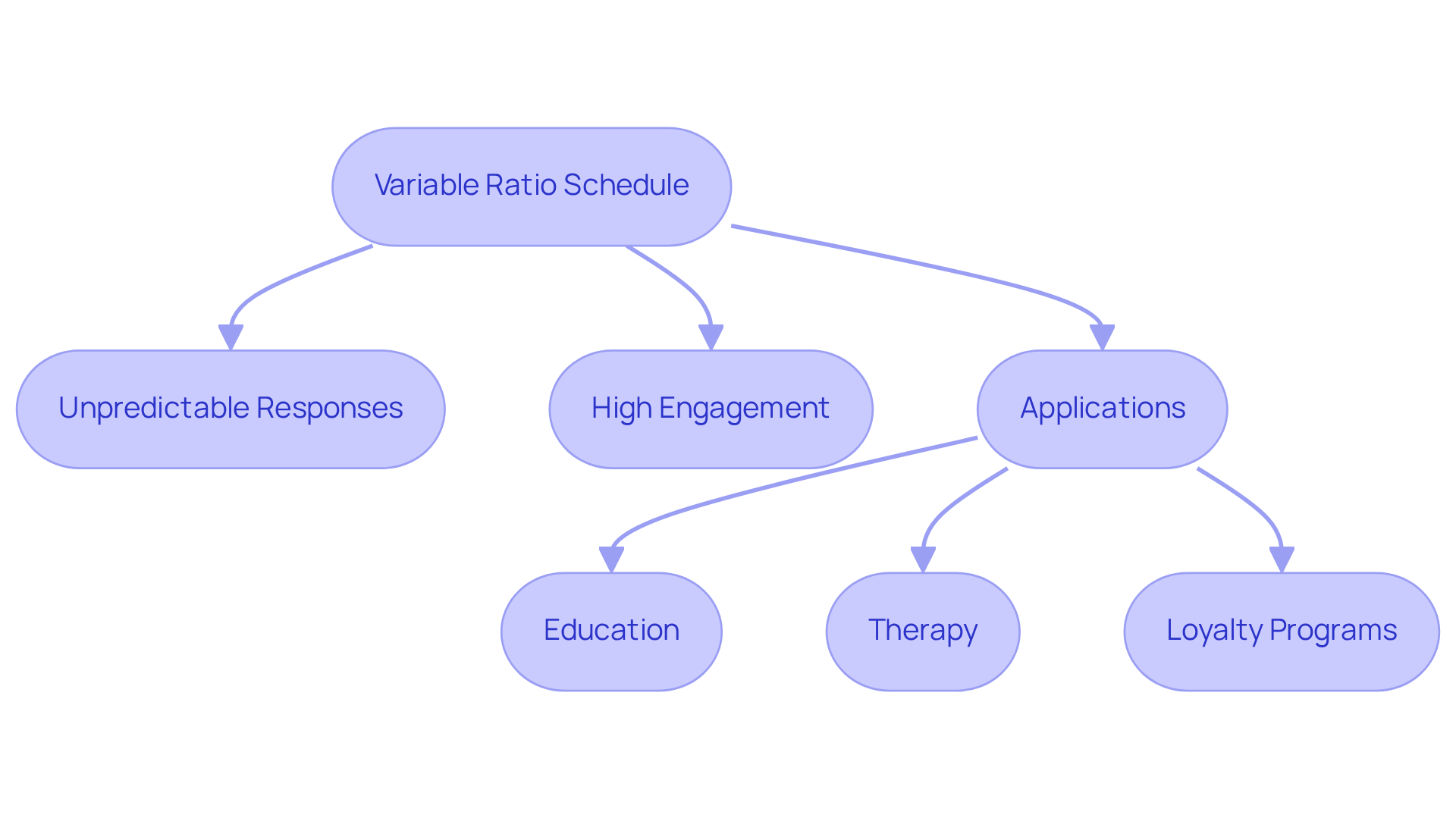
A fixed interval schedule delivers a reward after a predetermined time, irrespective of the number of responses. For example, fixed interval (FI) reinforcement occurs after a set time period, such as every 15 minutes of focused work. This method is particularly effective for , as it promotes regular engagement in preferred actions over time. By understanding that their efforts will be rewarded at consistent intervals, individuals are more inclined to sustain focus and develop a structured routine.
Practitioners have noted that not only foster patience but also contribute to a sense of achievement. As Steven Zauderer articulates, ' are essential instruments in that dictate how and when .' This underscores the as a vital asset in ABA therapy, which includes various schedules of reinforcement examples.
Moreover, is essential to evaluate the effectiveness of these plans, ensuring alignment with the individual needs of clients. The tactical application of this timetable significantly , as it resonates with the natural rhythm of activities and efficiently strengthens positive behaviors.
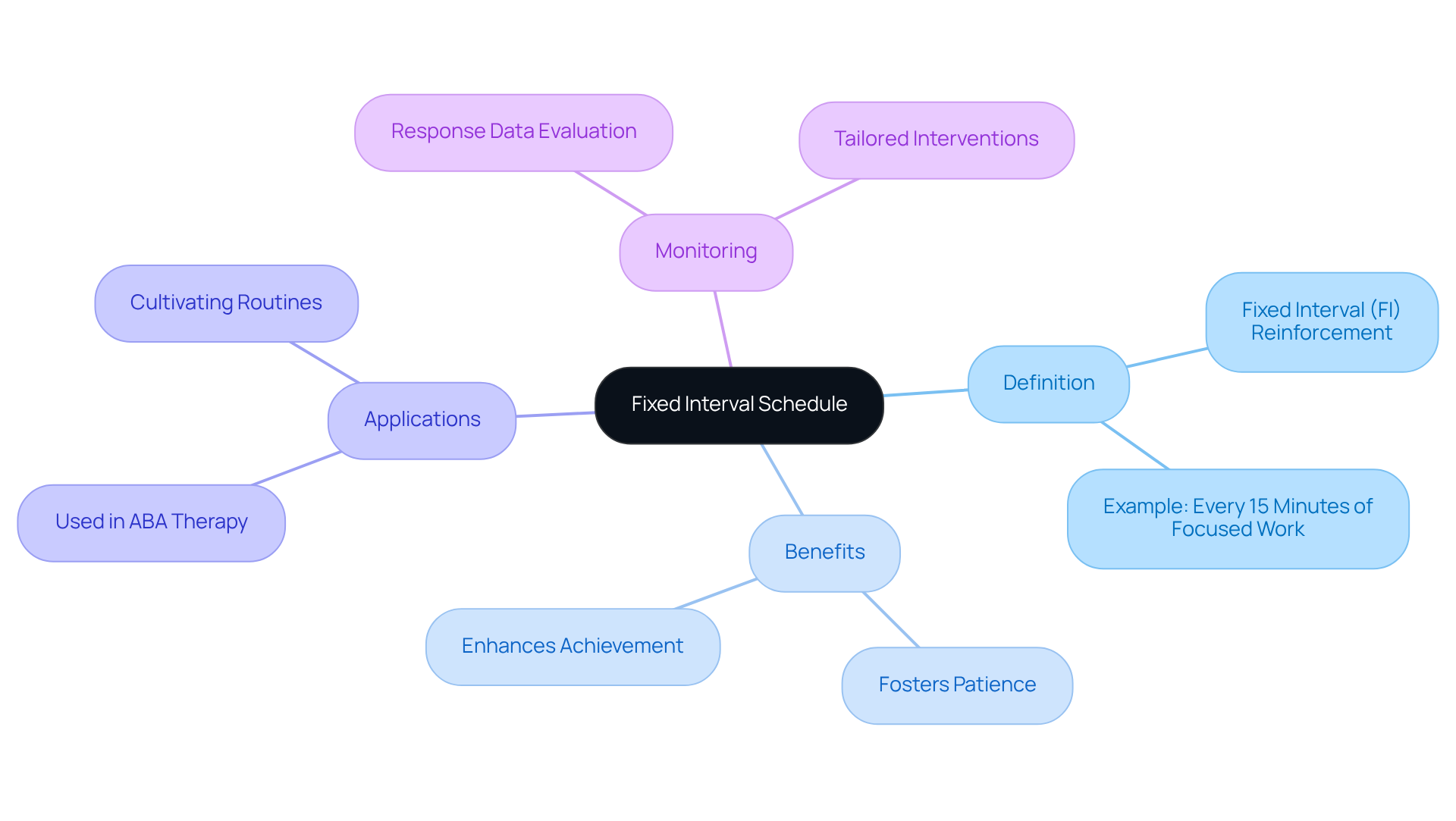
A variable interval schedule is one of the that reinforces actions after unpredictable time periods, such as rewarding a young person after 5 minutes, then 15 minutes, and so forth. This unpredictability in support motivates youngsters to persist in their efforts, as they cannot anticipate when the next reward will arrive. Such unpredictability not only fosters adaptability but also in actions, empowering youngsters to embrace a more .
frequently emphasize the , noting its potential to lead to sustained engagement and motivation—essential traits for . As B.F. Skinner articulated, ',' underscoring the importance of reward systems in . Furthermore, equips youngsters with the confidence needed for future achievements, aligning with Skinner's perspective that .
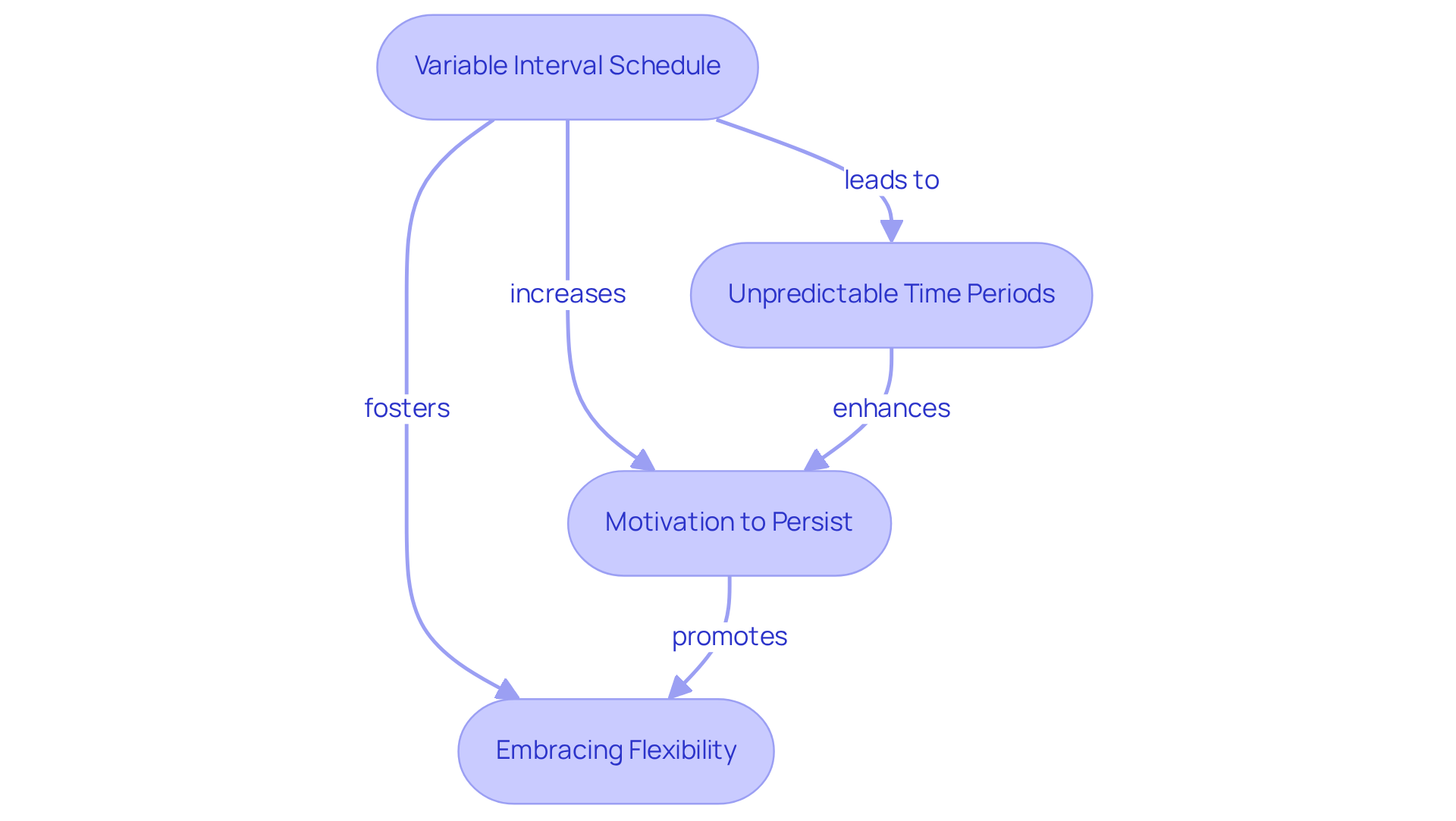
stands as a cornerstone strategy in , providing a reward each time a desired action occurs. Consider this: when a young person successfully completes a task, they might receive immediate praise or a small treat. This prompt feedback is not merely beneficial; it is essential for . It forges a direct connection between the action and the reward, significantly enhancing the likelihood of the action being repeated.
Research underscores this point, revealing that greatly improve learning outcomes. Studies show that youngsters who receive are more inclined to consistently engage in desired behaviors. The success rates of ongoing support in establishing new actions are remarkably high, making it a highly effective method for practitioners in .
By leveraging prompt rewards, therapists can adeptly such as task completion, eye contact, and social interactions. Ultimately, this approach fosters independence and .
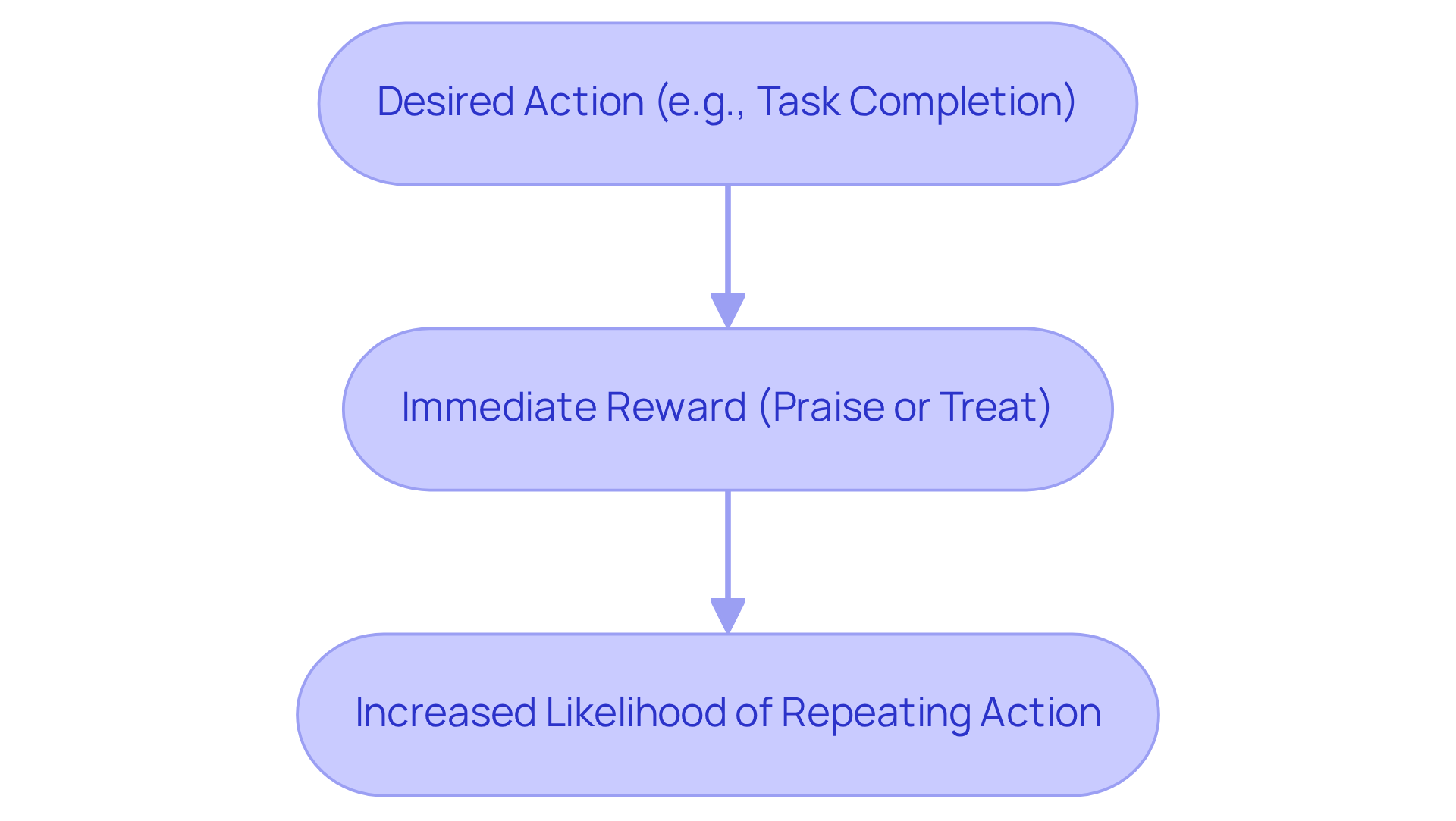
Intermittent rewards are provided only after specific instances of the , rather than consistently after each occurrence. This method effectively sustains motivation while preventing reliance on immediate rewards.
For example, consider a young person who receives praise, which is one of the , after every third correct response. This strategy not only fosters persistence but also , as individuals come to understand that while rewards are not guaranteed, they remain achievable.
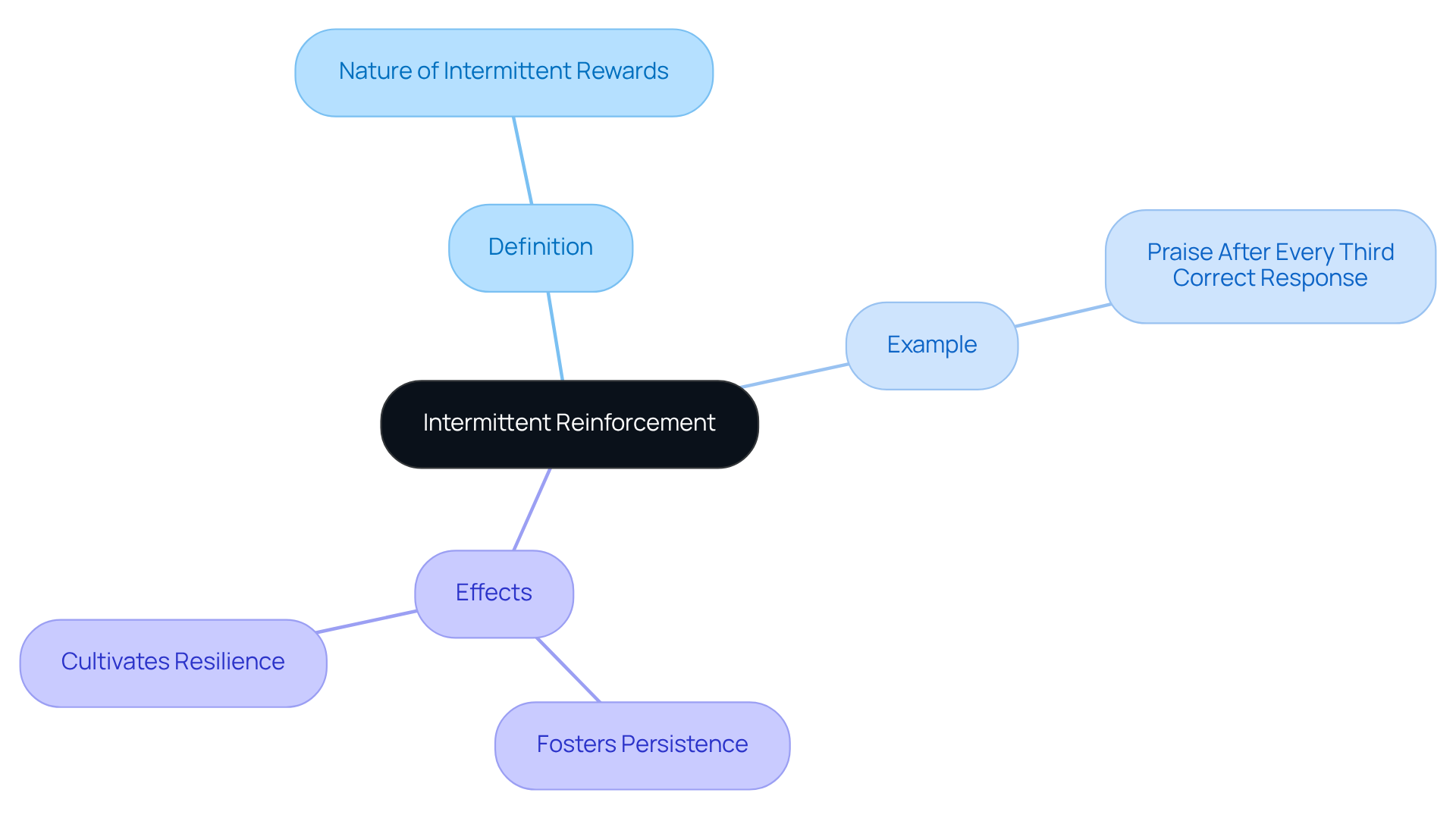
stands as a highly effective strategy that while minimizing or disregarding unwanted behaviors. For instance, when a young person is prompted to raise their hand before speaking, they receive praise for this behavior, while instances of shouting out answers are overlooked. This approach not only nurtures but also effectively , thereby cultivating a more .
Behavior analysts emphasize that this method fosters independence and motivates young individuals to engage in . By focusing on reinforcing preferred actions, caregivers can significantly impact young people's development, leading to improved conduct and enriched learning experiences.
The success of differential reinforcement hinges on its ability to consistently influence behavior, ultimately aiding youngsters in acquiring appropriate responses across various settings.
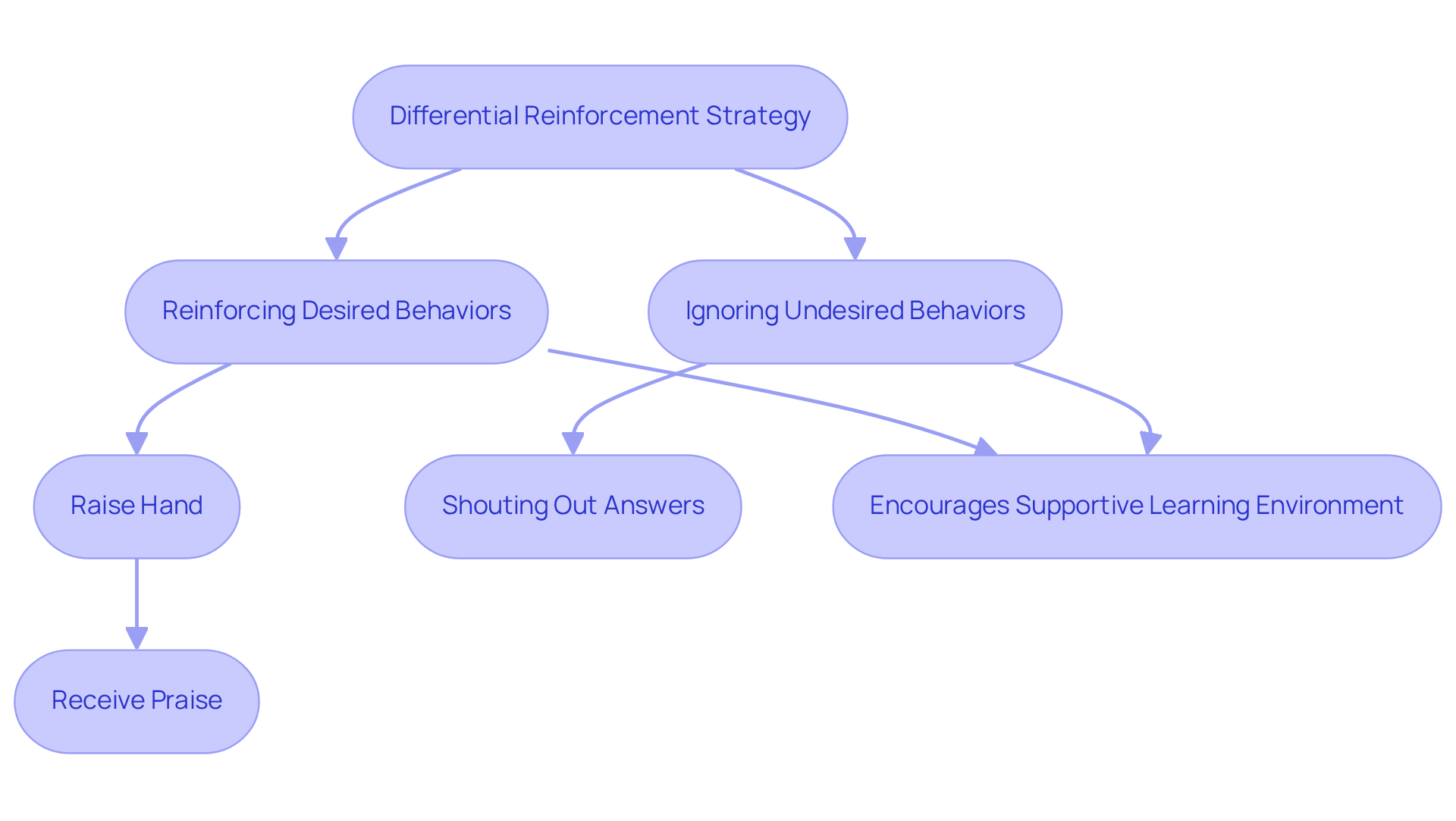
The effectiveness of reward schedules is significantly influenced by contextual factors, including individual preferences, environmental conditions, and specific behavioral goals. Consider this: a child may respond more positively to social praise in a group setting rather than to tangible rewards. By to address personal requirements, practitioners can . This approach not only fosters a but also aligns with the insights of who emphasize the necessity of customizing interventions.
For instance, applying a reward system that includes a child's favorite activities or interests can lead to enhanced motivation and engagement in therapy. Such and promoting overall development in .
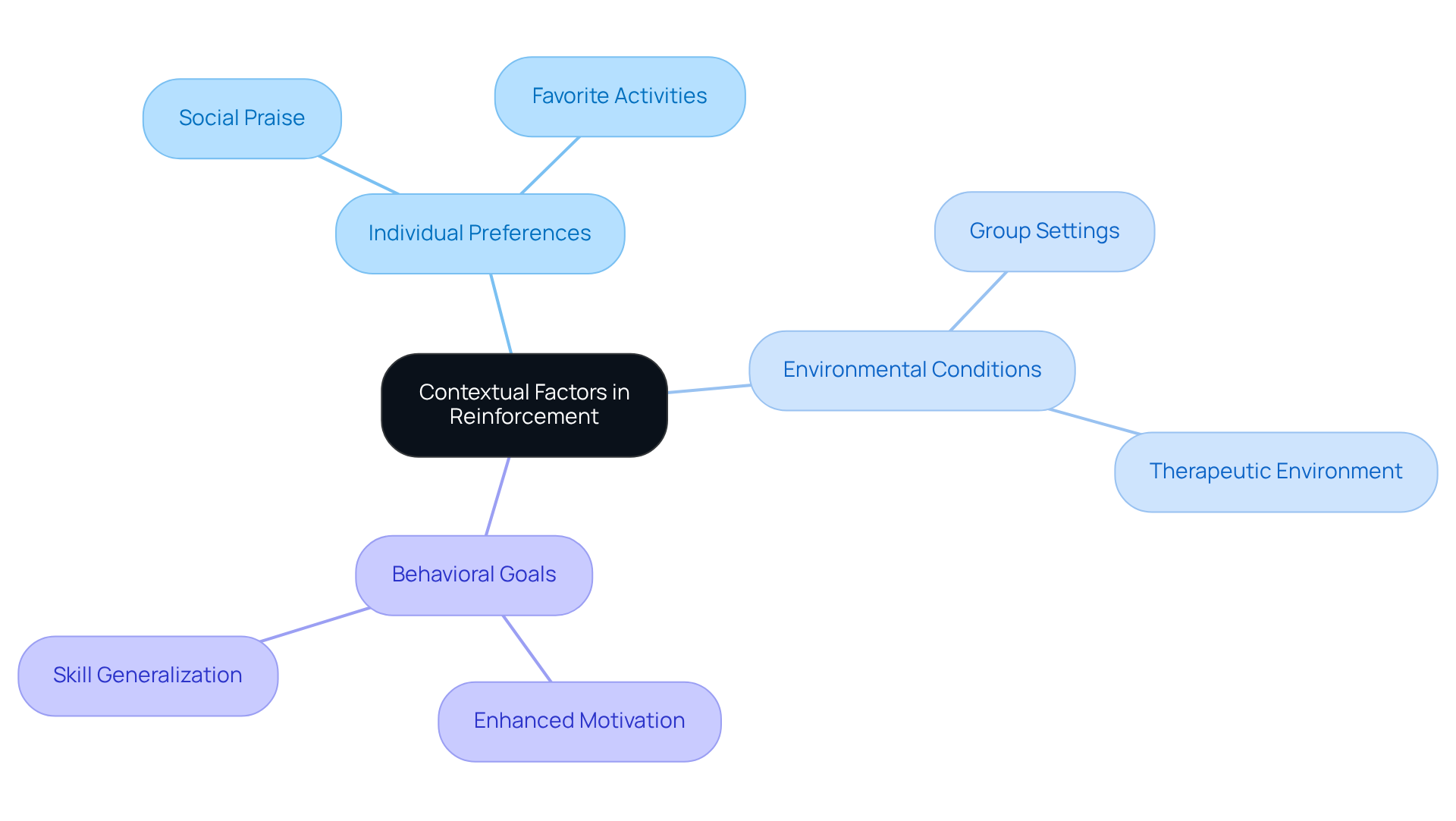
Effectively applying reinforcement plans in ABA therapy necessitates a . Practitioners must first identify specific behaviors to reinforce and select plans that best support those objectives.
For example, initiating a is among the that can facilitate skill development. Subsequently, transitioning to a , which serves as one of the schedules of reinforcement examples that strengthens behaviors after an average of three responses (VR 3), enhances the retention and durability of learned skills.
Regular assessment and modification of these strategies based on client progress are vital for maintaining engagement and ensuring therapeutic effectiveness. The integration of technology, such as Ensora Data Collection, plays a crucial role in and refining support protocols, thereby increasing the efficiency of the process.
This adaptive approach not only promotes flexibility but also aligns with the overarching goal of fostering and client independence. As Steven Zauderer aptly notes, 'Overall, schedules of reinforcement examples serve as essential tools for customizing interventions, promoting motivation, and ensuring behaviors are sustainable over time.
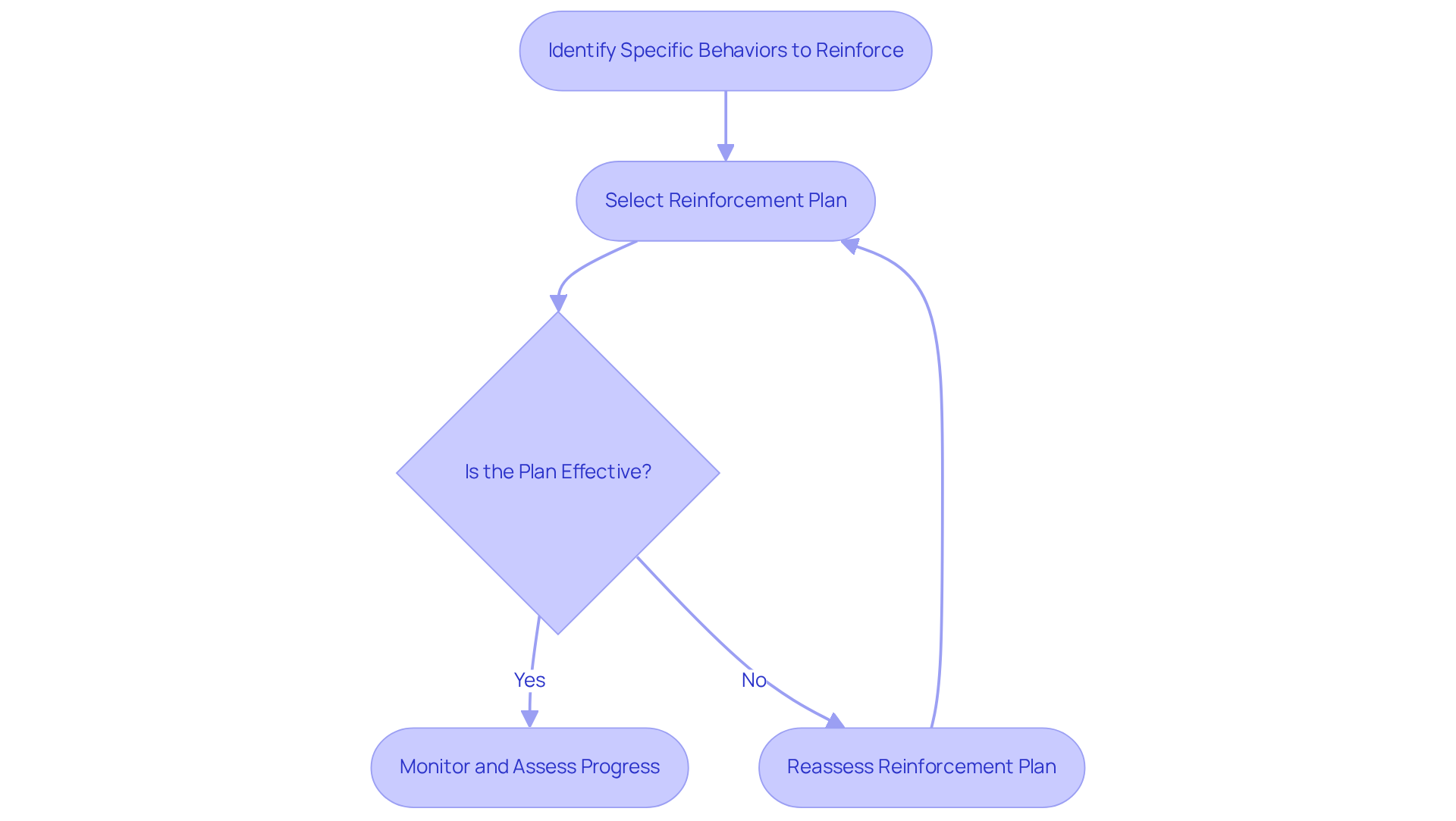
Understanding and implementing schedules of reinforcement are fundamental to enhancing the efficacy of Applied Behavior Analysis (ABA) therapy. By utilizing various reinforcement strategies—such as fixed ratio, variable ratio, fixed interval, and continuous reinforcement—therapists can create structured environments that motivate individuals, foster skill acquisition, and promote positive behavioral changes.
Throughout the article, key examples of reinforcement schedules have been explored, illustrating their practical applications in real-life scenarios. From the predictability of fixed schedules that encourage consistent performance to the unpredictability of variable schedules that maintain engagement, each method offers unique benefits. Additionally, the importance of tailoring these strategies to individual needs and contextual factors has been emphasized, ensuring that interventions remain relevant and effective.
Ultimately, the successful application of reinforcement schedules in ABA therapy not only aids in achieving immediate behavioral goals but also contributes to long-term developmental outcomes. By embracing these techniques, practitioners can significantly enhance the learning experience, empower individuals to thrive, and foster resilience in the face of challenges.
It is vital for behavior analysts to stay informed about current research and trends in reinforcement strategies to continuously improve their practice and impact the lives of those they serve.
What is Hire ABA and its purpose?
Hire ABA is a specialized recruitment platform designed for Board Certified Behavior Analysts (BCBAs), aimed at streamlining the hiring process and connecting qualified professionals with job opportunities that match their expertise and career aspirations.
How does Hire ABA assist job seekers?
Hire ABA provides personalized resume assessments, advanced job fit scoring, and essential resources like resume-building tools and interview preparation guides to enhance the job search experience for BCBAs.
What is the projected demand for BCBAs by 2026?
The demand for Board Certified Behavior Analysts (BCBAs) is projected to increase by 25% by 2026.
What are fixed ratio schedules in the context of reinforcement?
Fixed ratio schedules are reinforcement methods that provide rewards based on a predetermined number of responses, such as praising a child after completing five tasks, which encourages consistent performance.
How effective are fixed ratio schedules in skill acquisition?
Research shows that fixed ratio schedules can achieve success rates of up to 90% in improving skill acquisition, especially when caregivers are actively involved in the process.
What is a variable ratio schedule and how does it work?
A variable ratio schedule delivers reinforcement after an unpredictable number of responses, which helps maintain engagement and motivates individuals by creating a sense of anticipation for the next reward.
In what contexts are variable ratio schedules applied?
Variable ratio schedules are applied in educational environments, therapy sessions, loyalty programs, and gambling situations to enhance engagement and encourage persistence in behavior.
Why is unpredictability important in variable ratio schedules?
Unpredictability is crucial in variable ratio schedules because it fosters anticipation, which drives continued participation and maintains high and steady response rates essential for effective learning outcomes.
Our expert recruitment strategies and AI-driven sourcing ensure that you receive top-notch candidates quickly, without compromising on quality. Whether you’re looking for BCBAs, Clinical Directors, or RBTs, we’ve got you covered.